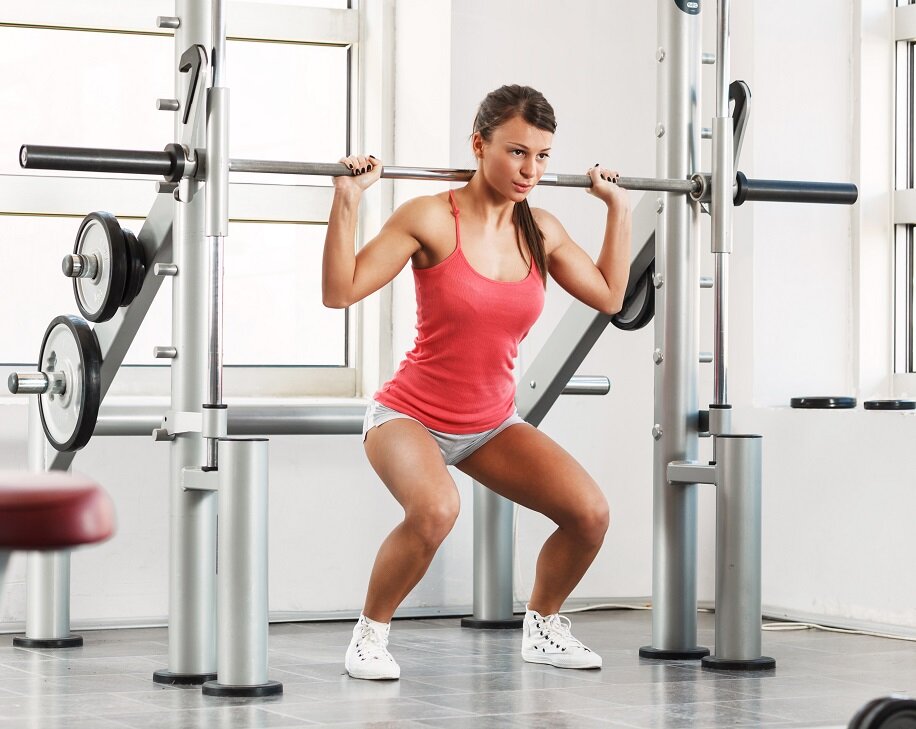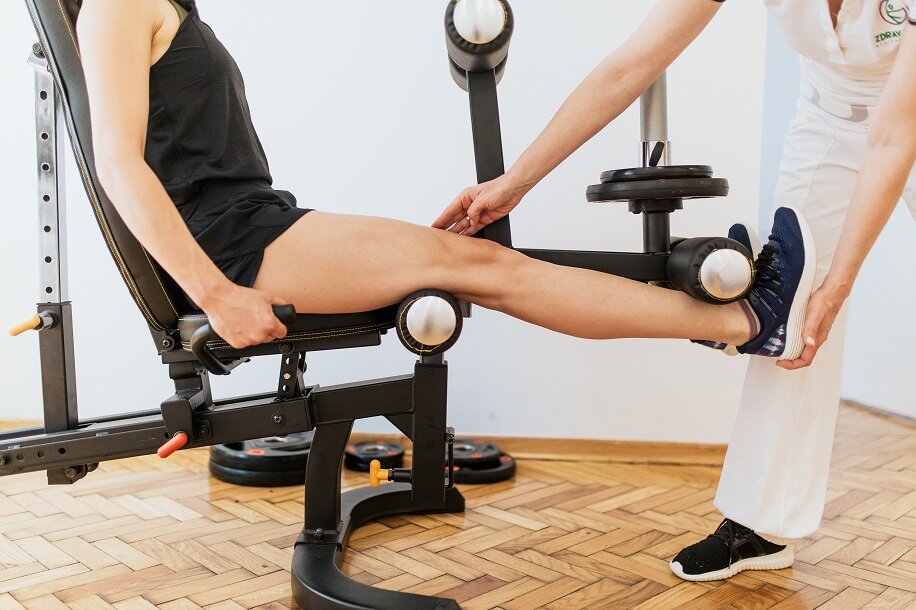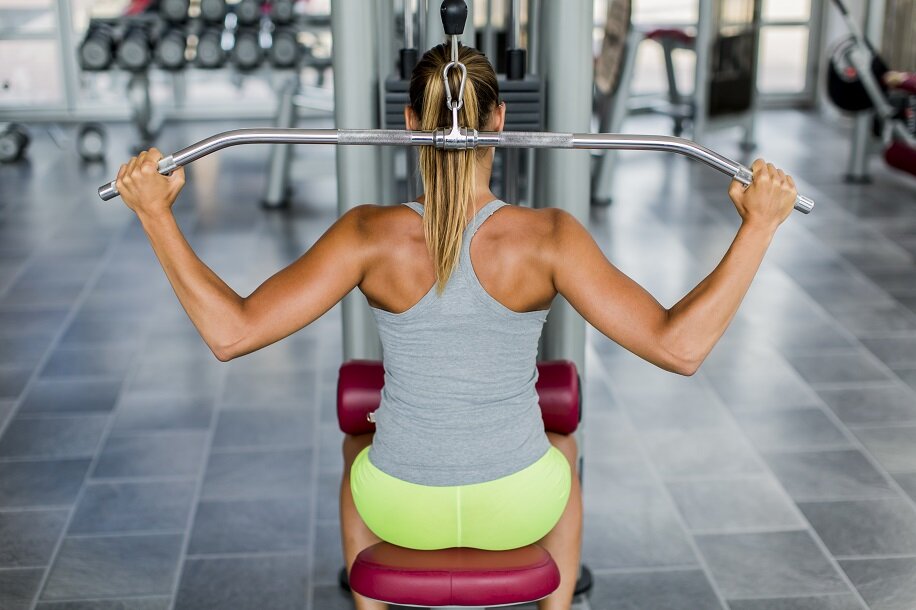4 Exercises at the Gym You Should Never Do
You’ve mustered the energy to go the gym – GREAT! Notice I said “go” and not join. There’s a big difference in making your monthly donation to the gym (we’ve all done this…) and actually opening the door and stepping through the threshold. And what an intimidating world it can be walking in to the gym. All those machines and gym-goers performing all sorts of exercises – some which you recognize and others you aren’t quite sure of.Unfortunate as it is, gyms are littered with equipment and machines that simply don’t provide the benefits they advertise. Yet people climb on them all day, believing that they’re putting in some serious muscle-building work.To help you get the most out of your time at the gym here are four exercises you should avoid, and some alternatives to set you on the path to big gains.
The Smith Machine
 Let’s start with the elephant in the room: the Smith machine.This is the machine that looks like a squat rack but has a barbell that is fixed and can only move in an up-and-down (and at an odd angle) fashion. I get it…the idea is that this is "safer" than having a free-standing barbell. But sadly people perform all kinds of barbell exercise on the Smith machine, including squats, bench press, shoulder pressing, and barbell rows.In all honesty, what makes the Smith machine "safe" is also what makes it more dangerous than free weights. The fixed barbell forces your body into strange positions that it can't normally achieve – especially under a load. Making things worse, the Smith machine also removes the major benefits of free weights: lifting the weight and the need to stabilize yourself while supporting the weight.Instead of the Smith machine – grab some dumbbells for some front squats, seated or standing presses, or lie down on the bench for some presses.
Let’s start with the elephant in the room: the Smith machine.This is the machine that looks like a squat rack but has a barbell that is fixed and can only move in an up-and-down (and at an odd angle) fashion. I get it…the idea is that this is "safer" than having a free-standing barbell. But sadly people perform all kinds of barbell exercise on the Smith machine, including squats, bench press, shoulder pressing, and barbell rows.In all honesty, what makes the Smith machine "safe" is also what makes it more dangerous than free weights. The fixed barbell forces your body into strange positions that it can't normally achieve – especially under a load. Making things worse, the Smith machine also removes the major benefits of free weights: lifting the weight and the need to stabilize yourself while supporting the weight.Instead of the Smith machine – grab some dumbbells for some front squats, seated or standing presses, or lie down on the bench for some presses.
Seated Leg Extensions
 Ever just sit around and kick out your legs? Okay…maybe to stretch, but do you ever do it with weights on your ankles? Probably not. So why would you sit in a machine and start raising your legs with weights centered on your ankles? Yeah, yeah, it makes your quads look big while you’re doing them, but for the life of me, I cannot think of a functional benefit to leg extensions...and this comes from a cyclist who values strong quads. The leg extension doesn’t mimic anything we do in everyday life, and worse, it puts your knees in a compromising position.If you want strong quads (hip flexors, glutes oh… and your core), try split squats or reverse lunges. Throw in some lateral lunges, too, and target the often neglected inner and outer thigh.
Ever just sit around and kick out your legs? Okay…maybe to stretch, but do you ever do it with weights on your ankles? Probably not. So why would you sit in a machine and start raising your legs with weights centered on your ankles? Yeah, yeah, it makes your quads look big while you’re doing them, but for the life of me, I cannot think of a functional benefit to leg extensions...and this comes from a cyclist who values strong quads. The leg extension doesn’t mimic anything we do in everyday life, and worse, it puts your knees in a compromising position.If you want strong quads (hip flexors, glutes oh… and your core), try split squats or reverse lunges. Throw in some lateral lunges, too, and target the often neglected inner and outer thigh.
Behind the Neck Presses or Pull-Downs
 Anything behind the neck is the worst: presses, pull-ups and pull-downs. It's an unnatural and unsafe position. By their very nature, behind-the-neck exercises require you to thrust your head and neck forward and break spinal alignment, which can result in a muscle strain, pull, tear, or, even worse, a spinal disk herniation. Any exercise that brings your spine out of alignment under load is potentially dangerous, and particularly when it's the neck, which is the most fragile section of the spinal column.Instead of behind the neck pull-downs, sit facing the bar with your feet flat on the floor and lean back slightly to relieve the pressure on your lower back. Now you can pull the bar down towards your chest at a slight angle. Instead of behind the neck presses, try doing dumbbell or kettlebell presses. Finish with the weights directly over your shoulders and your biceps facing your ears.
Anything behind the neck is the worst: presses, pull-ups and pull-downs. It's an unnatural and unsafe position. By their very nature, behind-the-neck exercises require you to thrust your head and neck forward and break spinal alignment, which can result in a muscle strain, pull, tear, or, even worse, a spinal disk herniation. Any exercise that brings your spine out of alignment under load is potentially dangerous, and particularly when it's the neck, which is the most fragile section of the spinal column.Instead of behind the neck pull-downs, sit facing the bar with your feet flat on the floor and lean back slightly to relieve the pressure on your lower back. Now you can pull the bar down towards your chest at a slight angle. Instead of behind the neck presses, try doing dumbbell or kettlebell presses. Finish with the weights directly over your shoulders and your biceps facing your ears.
Anything That Hurts
First let’s differentiate between discomfort due to muscle fatigue and pain. Working out is supposed to be uncomfortable – if it were easy, we’d all be in the best shape of our lives. But when discomfort becomes pain, it’s time to back off. You might be asking…what’s the difference? Burpees hurt. No, burpees cause discomfort, which builds over time (like after two, ha). Acute pain, on the other hand, tends to be sharp and sudden, and most often strikes near a joint or deep within a muscle. If you ever feel pain while working out stop – immediately. Do not pass GO and do not push through the pain.There are always alternative moves (more like 10) for every exercise out there. And if you are truly injured, a good trainer will help you work around your injury until you’re healthy again.

